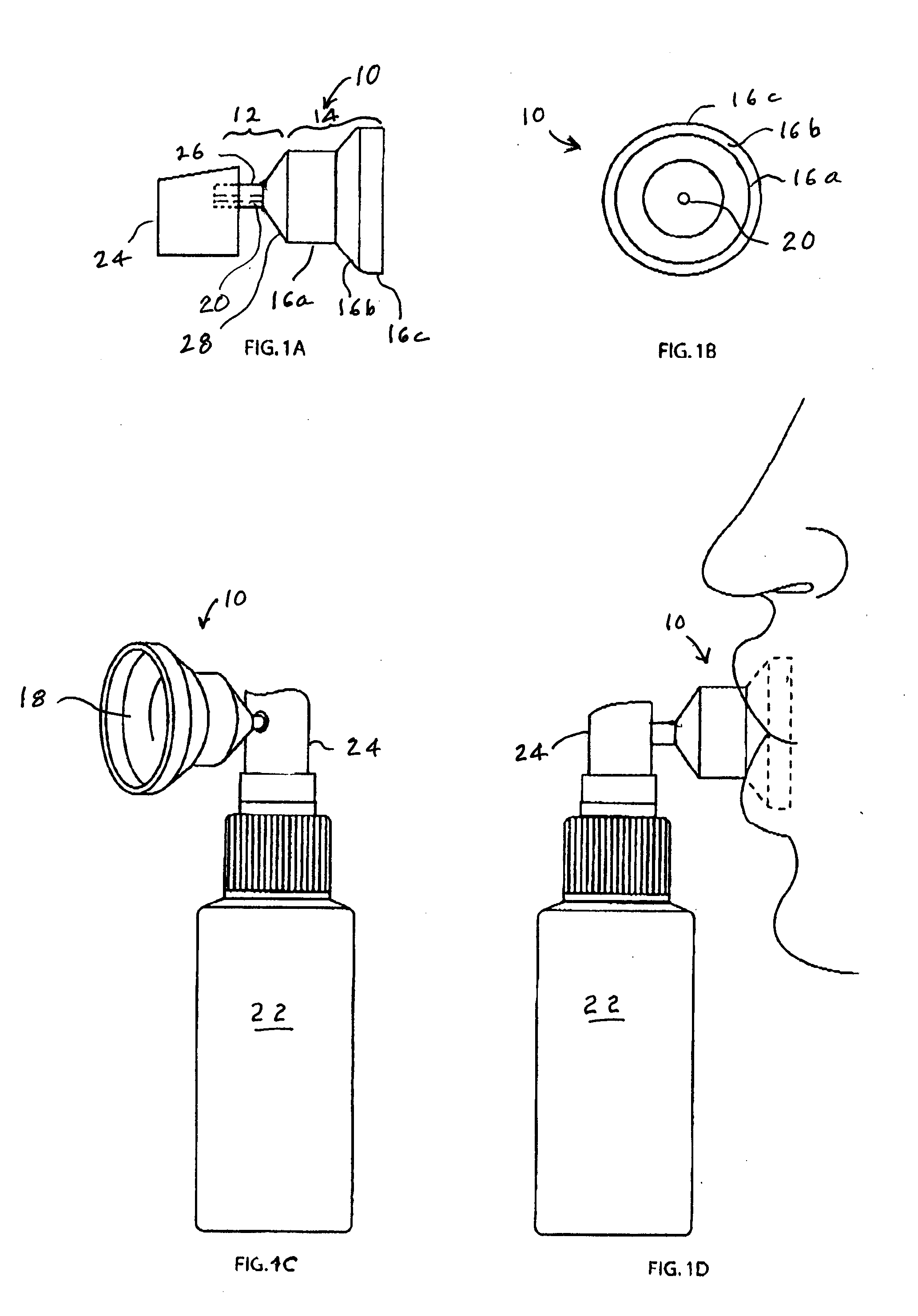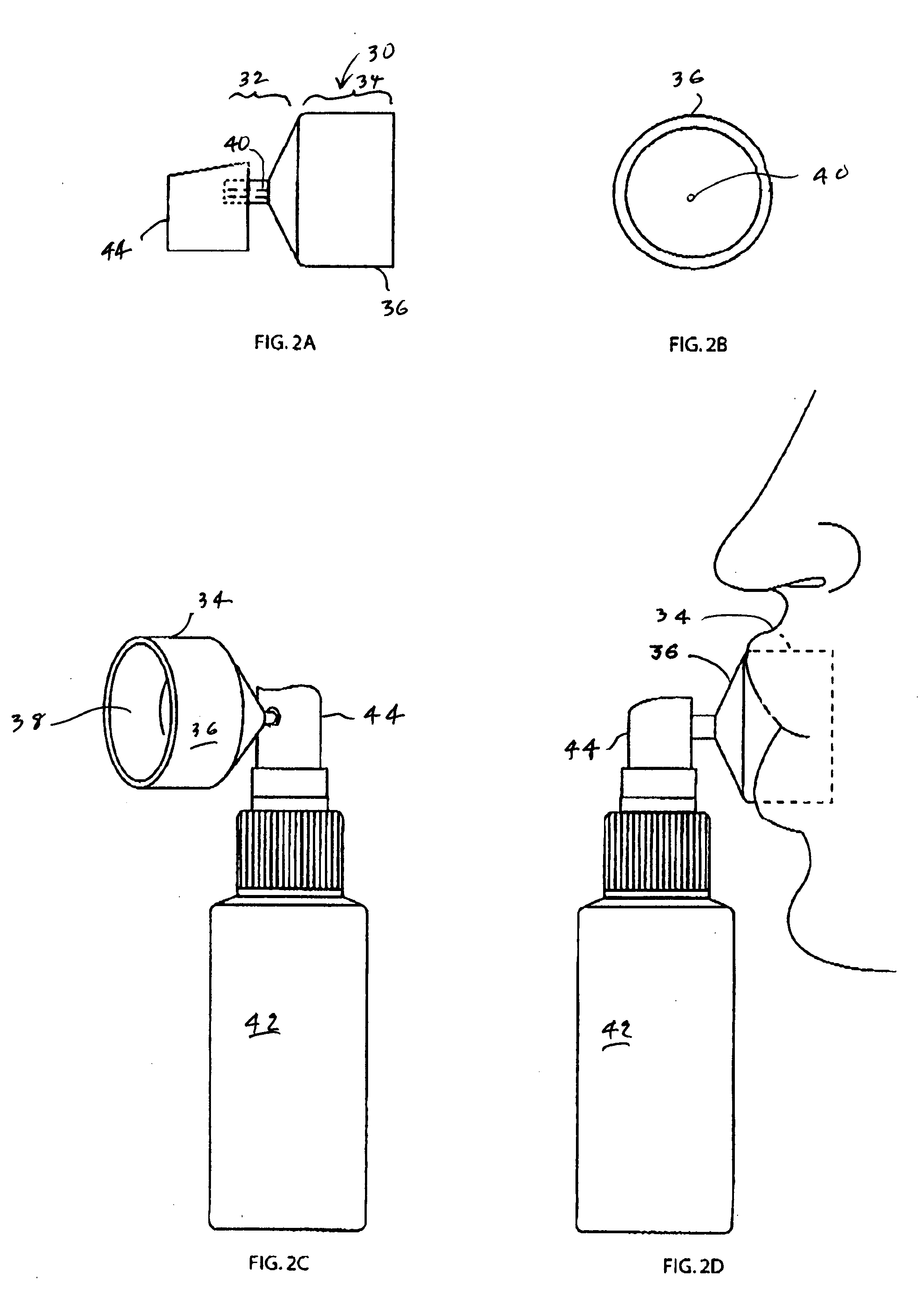Oral hygiene composition and apparatus and method
a technology of oral hygiene and composition, applied in the direction of drug compositions, aerosol delivery, impression caps, etc., can solve the problems injurious to oral tissue, and hydrogen peroxide oral rinse preparations having concentrations greater than 6% danger, and achieve safe and effective reduction of oral anaerobic bacteria, convenient use, and convenient use
- Summary
- Abstract
- Description
- Claims
- Application Information
AI Technical Summary
Benefits of technology
Problems solved by technology
Method used
Image
Examples
example i
[0057]The following describes an example of a preferred embodiment of the present invention that is effective in whitening of the teeth using one treatment.
High Strength Treatment—One Treatment Protocol.
[0058]
INGREDIENTAMOUNTHydrogen Peroxide solution (ca 35%) FMC1000 grams
[0059]The commercially available hydrogen peroxide 35% aqueous solution was poured directly into an atomizer, similar to that displayed in FIG. 6. The mouthpiece was then attached, and then holding the apparatus with two hands, one holding the mouthpiece and the other hand ready to squeeze the atomizer bulb, the mouthpiece was inserted into the oral cavity, where the mouth was closed such that the upper and lower arrays of teeth were touching. The mouthpiece portion of the mouthpiece-atomizer apparatus was then inserted into left quarter of the front portion of the mouth with the lips surrounding the outer portion of the mouthpiece so that fluid could not be ejected from the closed mouth. Then, the atomizer bulb w...
example ii
[0060]The following example describes a preferred tooth bleaching treatment procedure useful in achieving a high degree of whitening within a short period of time.
High Strength Treatment—Multi Treatment Protocol
[0061]
INGREDIENTAMOUNTHydrogen Peroxide solution (ca 35%) FMC1000 grams
[0062]The commercially available hydrogen peroxide 35% aqueous solution was poured directly into an atomizer reservoir, similar to that displayed in FIG. 6. The mouthpiece was then attached, and then holding the apparatus with two hands, one holding the mouthpiece, and the other hand ready to squeeze the atomizer bulb, the mouthpiece was inserted into the oral cavity, where the upper and lower jaws where closed such that the upper and lower arrays of teeth were touching. The mouthpiece portion of the mouthpiece-atomizer apparatus was then inserted into left quarter of the front portion of the mouth with the lips surrounding the outer portion of the mouthpiece so that fluid could not be ejected from the clo...
example iii
[0064]The following example describes a preferred embodiment of the present invention, where a sequence of tooth whitening operations is employed using different strengths of aerosol mixtures of hydrogen peroxide solutions.
Sequence Use of High Strength in Combination with Lower Strength Aerosol Mixtures
A. Preparation of High Strength Bleaching Solution
[0065]
INGREDIENTAMOUNTDeionized Water 50 gramsHydrogen peroxide solution (ca. 35%, FMC)950 grams
B. Preparation of Lower Strength Bleaching Solution
[0066]
INGREDIENTAMOUNTDeionized Water670 gramsHydrogen peroxide solution (ca. 35%, FMC)350 grams
[0067]The protocol employs sequential use of preparation A and B according to the sequence of: one day, once a day, of preparation A followed by three days, once each day, of preparation B, then repeating for a total of 24 days (6 rounds). The teeth were measured for whiteness using the Vita Shade Guide, and a change of 10 shades, +Δsgu, of whitening was determined. No pain or injury was reported,...
PUM
| Property | Measurement | Unit |
|---|---|---|
| Fraction | aaaaa | aaaaa |
| Fraction | aaaaa | aaaaa |
| Fraction | aaaaa | aaaaa |
Abstract
Description
Claims
Application Information
 Login to View More
Login to View More - R&D
- Intellectual Property
- Life Sciences
- Materials
- Tech Scout
- Unparalleled Data Quality
- Higher Quality Content
- 60% Fewer Hallucinations
Browse by: Latest US Patents, China's latest patents, Technical Efficacy Thesaurus, Application Domain, Technology Topic, Popular Technical Reports.
© 2025 PatSnap. All rights reserved.Legal|Privacy policy|Modern Slavery Act Transparency Statement|Sitemap|About US| Contact US: help@patsnap.com



